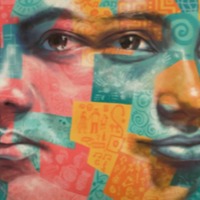
Cassie
There are an estimated 784,000 people living in modern slavery in the Philippines (GSI 2018). Men, women and children are subjected forced labour and sex trafficking both within the country and in destination countries. Women and children are subjected to sexual exploitation in brothels, bars, and massage parlours, online, as well as in the production of pornography. The Philippines is an international hub for prostitution and commercial sex tourism – a highly profitable businesses for organised criminal syndicates. The demand for sex with children among both local and foreign men has continued to fuel child sex tourism. Rising internet usage rates, the availability of mobile phones and poverty has fostered online child sexual exploitation. When Cassie was 12, a family friend took her to Manila promising to help her reach her dreams. She was forced to perform sexual acts in front of a computer. Customers all over the world would pay to watch her. IJM discovered Cassie’s story 4 years later and helped rescue her and six other victims from the house. Today, Cassie and the other children are safe at an aftercare shelter. Cassie calls this her second home.
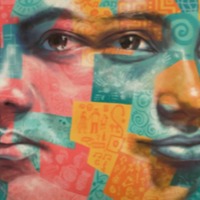
Gideon
There are an estimated 133,000 people living in modern slavery in Ghana (GSI 2018). Ghana remains a source, transit, and destination country for men, women, and children subjected to forced labor and sex trafficking. Ghanaian boys and girls are subjected to forced labor within the country in fishing, domestic service, street hawking, begging, portering, artisanal gold mining, quarrying, herding, and agriculture, including cocoa. Research focused on the fishing industry on Lake Volta indicated that more than half of the children working on and around the lake were born in other communities and many of these children are subjected to forced labor; not allowed to attend school; given inadequate housing and clothing; and are controlled by fishermen through intimidation, violence, and limiting access to food. Boys as young as five years old are forced to work in hazardous conditions, including deep diving, and many suffer waterborne infections. Gideon’s grandparents sent him to a man who promised to take care of him and help him go to school. Instead, the man enslaved Gideon in a fishing boat on Lake Volta in Ghana.
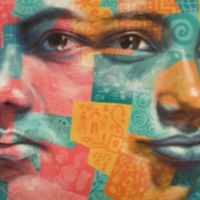
Sophia
There are an estimated 336,000 people living in modern slavery in Tanzania (GSI 2018). Internal trafficking is more prevalent than transnational trafficking and characteristically facilitated by victims’ family members, friends, or intermediaries offering assistance with education or securing employment in urban areas. Impoverished children from the rural interior remain most vulnerable to trafficking. Girls are exploited in domestic servitude throughout the country and in sex trafficking particularly in tourist hubs and along the border with Kenya. Sophia was 14 years old when she became a domestic worker. Forced to work long hours with no rest, Sophia was subjected to verbal abuse and her pay was withheld. One day Sophia was finally able to leave her situation and contacted Agape, an organisation supported by Anti-Slavery International. Sophia is now rebuilding her life.

Setsofia Dowokpor
There are an estimated 133,000 people living in modern slavery in Ghana (GSI 2018). Ghana remains a source, transit, and destination country for men, women, and children subjected to forced labor and sex trafficking. Ghanaian boys and girls are subjected to forced labor within the country in fishing, domestic service, street hawking, begging, portering, artisanal gold mining, quarrying, herding, and agriculture, including cocoa. Research focused on the fishing industry on Lake Volta indicated that more than half of the children working on and around the lake were born in other communities and many of these children are subjected to forced labor; not allowed to attend school; given inadequate housing and clothing; and are controlled by fishermen through intimidation, violence, and limiting access to food. Boys as young as five years old are forced to work in hazardous conditions, including deep diving, and many suffer waterborne infections. A study of the prevalence of child trafficking in selected communities in the Volta and Central Regions indicated that children from nearly one-third of the 1,621 households surveyed had been subjected to trafficking, primarily in fishing and domestic servitude. Setsofia’s mother was suffering from ill health when she arranged for him to be trafficked to a fishing village along Lake Volta in a desperate bid to get month to treat her illness. Setsofia was just 8 years old, falsely promised an education and that he would only work part time. However he was forced to work day and night on dangerous fishing boats with little food or rest. International Needs Ghana, an FTS partner, visited Setsofia’s childhood village to talk about the need to keep children away from hazardous work and to urge slave owners to release their trafficked children. As a result of this outreach and pressure, his slave holder freed Setsofia August 12, 2016.
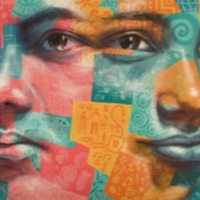
Gracie
It is estimated that there are over 9.2 million people living in conditions of modern slavery across Africa, with 101,000 of these in Central African Republic (GSI 2018). When considering forms of modern slavery, the rate of forced marriage (4.8 victims per 1000 people) was higher than the rate of forced labour (2.8 victims per 1000 people). Over half of all victims of forced labour were held in debt bondage, with similar proportions of men and women in the region trapped through dept. An estimated 400,000 people in Africa were victims of forced sexual exploitation. Within the region, Eritrea, Burundi, and Central African Republic were the countries with the highest prevalence of modern slavery; however, Nigeria and the Democratic Republic of the Congo had the highest absolute number and accounted for over one-quarter (26.3 percent) of all victims in the region. Gracie was 11 when her family was killed due to political and ethnic tension in Central Africa. A family friend took her to a neighbouring country to live with a woman where she was forced to provide sexual services to men. After two years in this brothel, Gracie was taken by a man called Abasi to London where she was once again forced in to prostitution. Gracie was able to escape after a year of sexual abuse and confinement. Told she should seek asylum Gracie appealed to the immigration office, however her passport had been faked to state she was 22 rather than 15 and she was arrested for document forgery. With the help of the NSPCC and a solicitor, Gracie was able to challenge local child services who stated she was an adult and able to find a safe place to live.
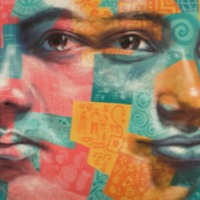
Amy A.
There are an estimated 136,000 people living on conditions of modern slavery un the United Kingdom (Global Slavery Index 2018). According to the 2017 annual figures provided by the National Crime Agency, 5, 145 potential victims of modern slavery were referred through the National Referral Mechanism in 2017, of whom 2,454 were female, 2688 were male and 3 were transgender, with 41% of all referrals being children at the time of exploitation. People are subjected to slavery in the UK in the form of domestic servitude, labour exploitation, organ harvesting and sexual exploitation, with the largest number of potential victims originating from Albania, China, Vietnam and Nigeria. This data however does not consider the unknown numbers of victims that are not reported. Amy’s sexual exploitation began at the age of 11 after fights with her mother led to long hours spent in local parks and town centres. After a few months she began spending time with one man who invited her to spend time with him and his friends at their flat. However, once there Amy was subjected to physical abuse daily. Not knowing how to escape or where she would go, Amy’s abuse continued until she was 13.
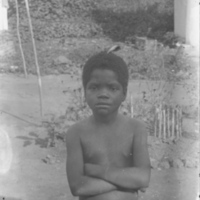
African Child
African child. This image formed part of the Harris Lantern Slide Collection. Under King Leopold II the Congo Free State used mass forced labour to extract rubber from the jungle for the European market. As consumer demand grew King Leopold II's private army - the Force Publique - used violent means to coerce the population into meeting quotas, including murder, mutilation, rape, village burning, starvation and hostage taking. Alice Seeley Harris and her husband Reverend John H. Harris were missionaries in the Congo Free State from the late 1890s. Alice produced a collection of images documenting the horrific abuses of the African rubber labourers. Her photographs are considered to be an important development in the history of humanitarian campaigning. The images were used in a number of publications. The Harrises also used the photographs to develop the Congo Atrocity Lantern Lecture which toured Britain and the the USA raising awareness of the issue of colonial abuses under King Leopold II's regime. Source: Antislavery International.
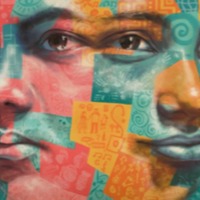
Muttam Jyotsna
It is estimated that almost 8 million people are living in conditions of modern slavery in India (GSI 2018). The skewed sex ratio in some regions of India has fuelled the trafficking and selling of women and young girls as brides within India. Women are reportedly sold off into marriage by their families, sometimes at a young age, and end up enduring severe abuse, rape and exploitation by their husbands. It is also reported that women and girls from impoverished backgrounds have been lured by promises of marriage by younger men from urban areas, then forced into sex work once married. Muttam Jyostna was 15 years old when she met a boy from the same caste as her and from a known family. Their parents decided to get them married. However, after the marriage Muttam was unable to do anything without the permission of her mother-in-law. Her food was restricted and she was subjected to physical abuse from her husband.
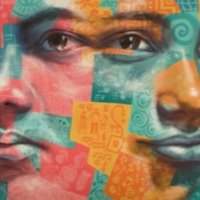
Tamzin
There are an estimated 136,000 people living on conditions of modern slavery in the United Kingdom (Global Slavery Index 2018). According to the 2017 annual figures provided by the National Crime Agency, 5, 145 potential victims of modern slavery were referred through the National Referral Mechanism in 2017, of whom 2,454 were female, 2688 were male and 3 were transgender, with 41% of all referrals being children at the time of exploitation. People are subjected to slavery in the UK in the form of domestic servitude, labour exploitation, organ harvesting and sexual exploitation, with the largest number of potential victims originating from Albania, China, Vietnam and Nigeria. This data however does not consider the unknown numbers of victims that are not reported. Tamzin was a teenager when she met a man and soon fell in love with him. However, after a couple of years this man became obsessive, controlling everything Tamzin did, forcing her to have sex and store drugs for him. Here Tamzin describes her story in her own words.
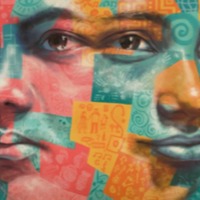
Shahida
There are an estimated 749,000 people living in conditions of modern slavery in Afghanistan (GSI 2018). Afghanistan remains a source, transit and destination country for men, women and children subjected for forced labour and sex trafficking, with internal trafficking being more prevalent than transnational. Victims of trafficking in the country are subjected to bonded labour, in which whole families are often trapped, along with children being exploited in carpet making and brick factories, domestic servitude, commercial sex, begging and drug smuggling. Shahida was 13 years old when she was forced to marry a 45 year old man. Though she ran away, her father forced her to return to her husband, when she refused, he attempted to bury her alive. Shahida was eventually able to escape to a shelter and then was able to get the help she needed from Hagar International.
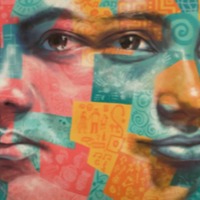
Poppy
The Global Slavery Index 2018 estimates that on any given day there were nearly 8 million people living in modern slavery in India. The GSI 2018 reports an emerging trend in northeast India where organised trafficking syndicates operate along the open and unmanned international borders, duping or coercing young girls seeking employment outside their local area in to forced sexual exploitation. Many women and girls are lured with the promise of a good job but then forced in to sex work, with a 'conditioning' period involving violence, threats, debt bondage and rape. Poppy, along with her older sister Jesmin and the rest of her family, migrated to Mumbai when she was young. Once there, Poppy and her sisters went to work in a ‘bar’ to help support their family. Poppy worked massaging men where she was subjected to physical and sexual abuse.
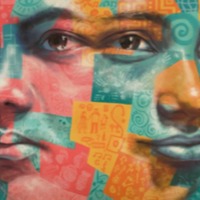
Jesmin
The Global Slavery Index 2018 estimates that on any given day there were nearly 8 million people living in modern slavery in India. The GSI 2018 reports an emerging trend in northeast India where organised trafficking syndicates operate along the open and unmanned international borders, duping or coercing young girls seeking employment outside their local area in to forced sexual exploitation. Many women and girls are lured with the promise of a good job but then forced in to sex work, with a 'conditioning' period involving violence, threats, debt bondage and rape. Jesmin, along with her sister Poppy and the rest of her family, migrated to Mumbai when she was a young child. In Mumbai, Jesmin and her sisters went to work in a ‘bar’ to help support their family, forced to give all of their money to their father who wasted it on gambling, they received nothing for their work.
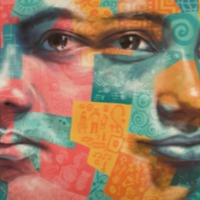
Ruma
The Global Slavery Index 2018 estimates that on any given day there were nearly 8 million people living in modern slavery in India. The GSI 2018 reports an emerging trend in northeast India where organised trafficking syndicates operate along the open and unmanned international borders, duping or coercing young girls seeking employment outside their local area in to forced sexual exploitation. Many women and girls are lured with the promise of a good job but then forced in to sex work, with a 'conditioning' period involving violence, threats, debt bondage and rape. Ruma was trafficked to Mumbai at the age of 11 by her cousin. After spending months working in her house, Ruma’s cousin then sold her to a woman from Kolkata for sex work.
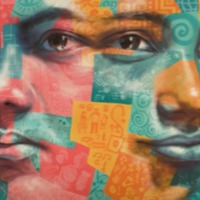
Setara
The Global Slavery Index 2018 estimates that on any given day there were nearly 8 million people living in modern slavery in India. The GSI 2018 reports an emerging trend in northeast India where organised trafficking syndicates operate along the open and unmanned international borders, duping or coercing young girls seeking employment outside their local area in to forced sexual exploitation. Many women and girls are lured with the promise of a good job but then forced in to sex work, with a 'conditioning' period involving violence, threats, debt bondage and rape. Setara was sold to a brothel in Sonagachi at 15 years old. Setara was able to leave sexual exploitation when she met her husband, however he would not let her forget where she came from and eventually Setara returned to the brothel.
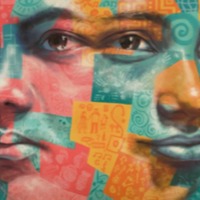
Rakhi
The Global Slavery Index 2018 estimates that on any given day there were nearly 8 million people living in modern slavery in India. The GSI 2018 reports an emerging trend in northeast India where organised trafficking syndicates operate along the open and unmanned international borders, duping or coercing young girls seeking employment outside their local area in to forced sexual exploitation. Many women and girls are lured with the promise of a good job but then forced in to sex work, with a 'conditioning' period involving violence, threats, debt bondage and rape. Rakhi was trafficked by a neighbour to Kolkata where she was subjected to forced sexual exploitation.
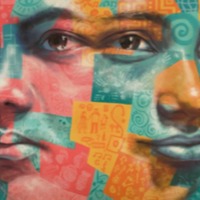
Anita C
The Global Slavery Index 2018 estimates that on any given day there were nearly 8 million people living in modern slavery in India. The GSI 2018 reports an emerging trend in northeast India where organised trafficking syndicates operate along the open and unmanned international borders, duping or coercing young girls seeking employment outside their local area in to forced sexual exploitation. Many women and girls are lured with the promise of a good job but then forced in to sex work, with a 'conditioning' period involving violence, threats, debt bondage and rape. Anita was 13 years old when she was sold in to a brothel in Barsial. After escaping the brothel and disappearing, Anita was found by her sister Monika who took her to Sonagatchi (India’s largest red-light district). Monika forced Anita to work for her for 3 years.
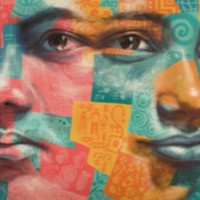
Sita
The Global Slavery Index 2018 estimates that on any given day there were nearly 8 million people living in modern slavery in India. The GSI 2018 reports an emerging trend in northeast India where organised trafficking syndicates operate along the open and unmanned international borders, duping or coercing young girls seeking employment outside their local area in to forced sexual exploitation. Many women and girls are lured with the promise of a good job but then forced in to sex work, with a 'conditioning' period involving violence, threats, debt bondage and rape. Sita was 11 years old when she was promised a job in Kaligoni by someone from her village. However, she was instead taken to Kolkata to a brothel and kept until her first menstruation, after which she was taken to Bombay and sold in to forced sexual exploitation. At the age of 15 Sita ran away back to Kolkata.
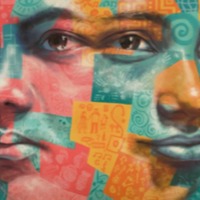
Minara
There are an estimated almost 8 million people living in modern slavery in India (GSI 2018). India has a population of more than 1.3 billion people, there are still at least 270 million people living on less than US$1.90 per day. While laws, systems and attitudes regarding key 'fault lines' such as the caste system, gender and feudalism are rapidly changing, social change of this depth and scale necessarily takes time. In this context, it is perhaps unsurprising that existing research suggests that all forms of modern slavery continue to exist in India, including intergenerational bonded labour, forced child labour, commercial sexual exploitation, forced begging, forced recruitment into nonstate armed groups and forced marriage. Minara was trafficked after a local man convinced her mother he could find her a job in Kolkata.
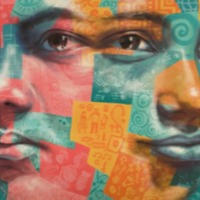
Mala
The Global Slavery Index 2018 estimates that on any given day there were nearly 8 million people living in modern slavery in India. The GSI 2018 reports an emerging trend in northeast India where organised trafficking syndicates operate along the open and unmanned international borders, duping or coercing young girls seeking employment outside their local area in to forced sexual exploitation. Many women and girls are lured with the promise of a good job but then forced in to sex work, with a 'conditioning' period involving violence, threats, debt bondage and rape. Mala was trafficked at 15 years old by a distant relative (Roma) who had been in the sex trade for a long time. Her parents were unaware of this and allowed Mala to go with Roma for a job as a nanny to her son. However, upon arrival Mala was forced in to commercial sexual exploitation.
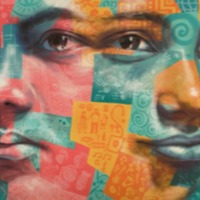
Shyama
The Global Slavery Index 2018 estimates that on any given day there were nearly 8 million people living in modern slavery in India. The GSI 2018 reports an emerging trend in northeast India where organised trafficking syndicates operate along the open and unmanned international borders, duping or coercing young girls seeking employment outside their local area in to forced sexual exploitation. Many women and girls are lured with the promise of a good job but then forced in to sex work, with a 'conditioning' period involving violence, threats, debt bondage and rape. Shyama was 15 years old when she and her younger sister were sent to work in a brothel. They did not receive a salary and were forced to provide sexual services to men under the threat of violence.